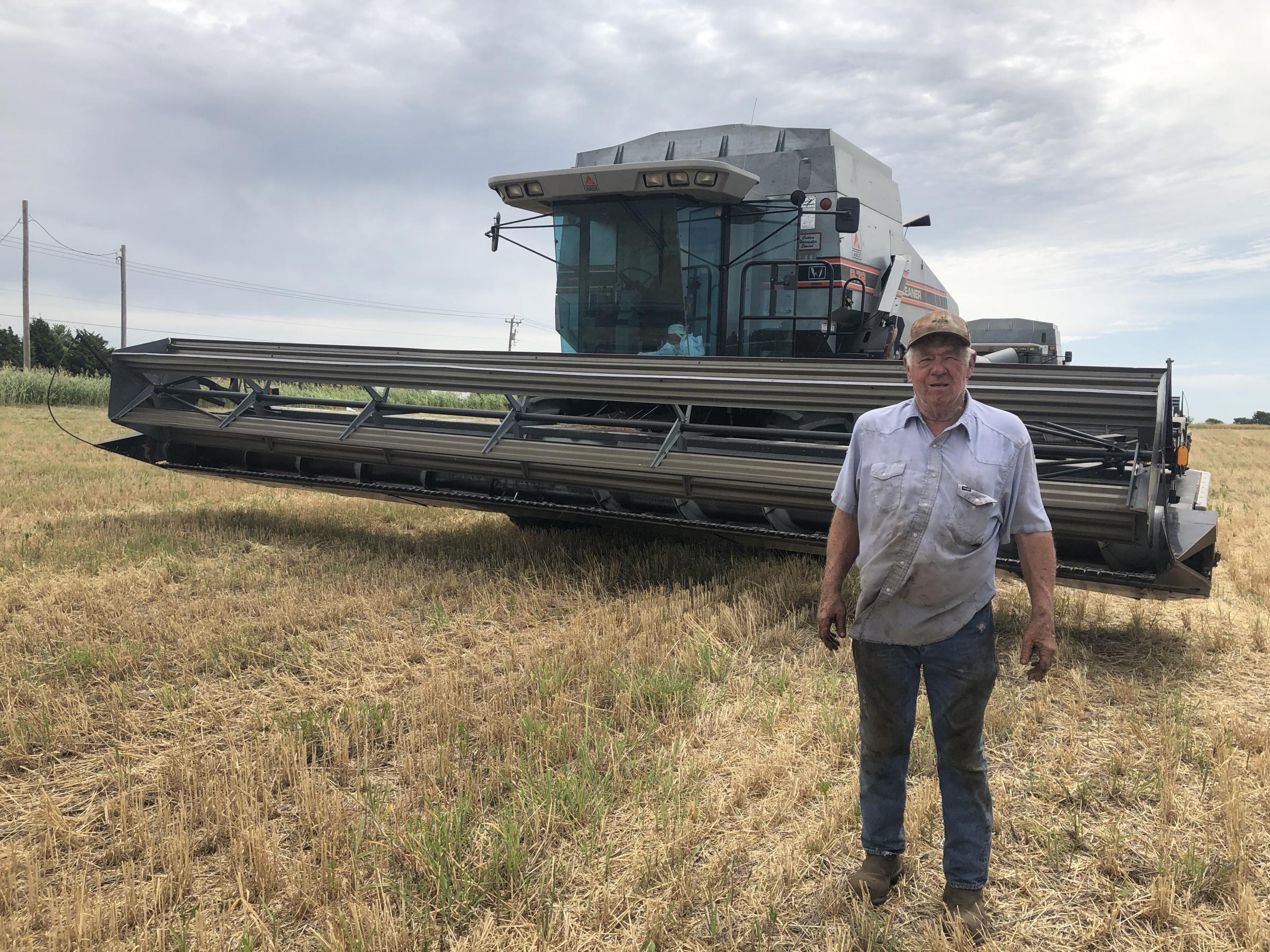
John Blair, a farmer from northwest Oklahoma County, stands in front of his wheat combine June 12. Blair has been raising wheat for decades. This year, he planted around 1,000 acres of wheat but lost part of the crop in a fire. (RACHEL HUBBARD / KOSU)
Even as more people bake during the pandemic, some wheat farmers may need help to break even this year.
Jimmy Kinder, a farmer from southwestern Oklahoma, is in what he calls “wheat crop mode.” Kinder, a fourth-generation farmer, mainly grows wheat and raises cattle. Like many farmers across Oklahoma and the Great Plains region right now, Kinder’s wheat is ready to harvest.
Kinder says things were looking good this year until Mother Nature brought a freeze in early April. The weather took approximately half of his yield because the wheat froze right when it was starting to flower and it was vulnerable to freeze.
“Today’s wheat crop is all about trying to stay in business till things get better,” Kinder says.
While the Kinder’s wheat grew, the wheat heads are not producing as much grain as expected. There’s also a flash drought in his area. But that’s actually good news for him.
“That's excellent for wheat harvest and we're able to get the harvest out with dry ground,” Kinder says.
Dry conditions through the winter wheat belt may mean that harvest season will progress quickly in some southern states. Kim Anderson, a professor of agricultural marketing at Oklahoma State University and Extension economist, says the dry heat is good for harvesting.
“Oklahoma and the Texas Panhandle, we're just positioned where our crop was mature enough to withstand the dry conditions and prepare us for harvest,” Anderson says.
As more people are baking during the pandemic, he saw wheat prices rise. It was only a small increase. Overall, a global surplus has pushed wheat prices down. He says the world is producing 28.2 billion bushels of wheat — an all-time record. Anderson says countries in the Black Sea region like Russia, Ukraine and Kazakhstan have been steadily increasing its production of wheat.
“And so I think it's stocks that got the price low,” he says.
Because of this, Anderson says U.S. farmers are losing about 20 cents per bushel. But for some farmers, especially those only growing wheat, that may not be a problem.
“The one that's completely dedicated will have a much higher probability of breaking even and than part-time producer because a large part of the cost is land and machinery and large producers can spread that cost over more acres and more bushels,” Anderson says.
Anderson says lower wheat prices won’t make bread or flour any cheaper at the grocery store. But farmers like Jimmy Kinder will take a hit.
Kinder says wheat is about 40% of his income. Although he’s always adapted to the market, Kinder says the economic ups and downs from COVID-19 have put extra pressure on him.
“I work all year to produce something that's marketed in one month,” Kinder says. “And so I've got to make sure that a year's worth of work doesn't go in vain and get the best price possible.
Kinder says he’s using some of his wheat to feed his cattle and putting off any major purchases. In the meantime, he has applied for federal aid through programs, like the $19 billion coronavirus food assistance program.












